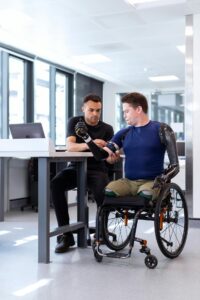The landscape of social security and disability benefits is continually evolving, driven by technological innovation. As we move into 2025, the Social Security Administration (SSA) is making significant strides to incorporate new tools and systems that aim to streamline processes, improve accuracy, and enhance overall service delivery for SSDI beneficiaries. These advancements are part of a broader effort to modernize government services in a digital age, ensuring that individuals receive timely support with greater convenience.
Embracing Digital Transformation
One of the most noticeable shifts in SSDI services in 2025 is the increased reliance on digital platforms. The SSA has been working to make the application process more accessible online, allowing claimants to submit their forms and supporting documents via user-friendly portals. This digital transformation reduces paperwork, accelerates processing times, and provides a more seamless experience for applicants, especially those who may find traditional paper-based systems challenging.
AI and Machine Learning in Decision-Making
Artificial Intelligence (AI) and machine learning technologies are now playing a vital role in SSDI case evaluations. These tools assist SSA evaluators by analyzing large volumes of data more efficiently and accurately. While medical assessments and eligibility determinations still require human oversight, AI algorithms can flag anomalies, prioritize cases, and provide additional insights that improve decision-making quality. This results in quicker decisions and reduces the backlog of pending claims, which has been an ongoing challenge for the SSA.
Enhanced Data Sharing and Integration
Another key development is the improvement of data sharing across government agencies and healthcare providers. By creating more integrated data systems, the SSA can access medical records, employment histories, and other vital information in real time. This connectivity not only accelerates the verification process but also ensures that decisions are based on comprehensive and up-to-date information, ultimately benefiting applicants and reducing chances of errors.
Remote and Telehealth Assessments
In response to ongoing health concerns and the need for more flexible assessments, SSA has expanded its use of telehealth options for medical evaluations. This allows healthcare providers to conduct interviews and examinations remotely, making it easier for applicants who have mobility issues or live in remote areas to complete their disability assessments from the safety and comfort of their homes.
Looking Ahead: The Future of SSDI Technologies
As technology continues to advance, the SSA is expected to further innovate its approaches to managing disability claims. Emerging fields such as blockchain could enhance data security, while augmented reality (AR) might be used for remote medical examinations in the future. The goal remains to make SSDI services faster, more secure, and more accessible for all.
The ongoing technological enhancements in SSDI are promising signs of a more efficient and user-centric future. For applicants and beneficiaries alike, staying informed about these changes can make the process less daunting and more transparent. As we look to 2025, it’s clear that technology is at the forefront of shaping the future of disability benefits.







